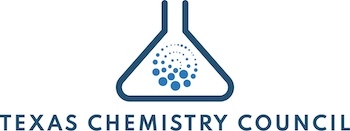Complete Story
12/12/2024
EPA Allows Continued Use of Toxic Chemical Used in Refrigerants
E&E News PM | Ellie Borst | Dec. 11, 2024
EPA Allows Continued Use of Toxic Chemical Used in Refrigerants
EPA rejected calls from environmental health advocates to strengthen restrictions on a toxic chemical championed by industry as a "critical" alternative to its ozone-depleting counterparts.
The agency released its final rule regulating carbon tetrachloride, a compound linked to cancer and liver toxicity used as a feedstock to make refrigerants, aerosol propellants and foam-blowing agents.
The final rule bans the chemical in all uses that have already been phased out and adds stricter workplace safety protections for all other scenarios. Much like the agency's proposal released in July 2023, the final rule bans all uses "where information indicates use of CTC has ceased," according to a prepublication version.
But the rule adds a caveat: the chemical can continue to be used to make vinyl chloride, a highly carcinogenic chemical used to make PVC pipes, a condition of use regulators previously thought had been phased out.
All other uses of CTC, a chemical with an annual production volume averaging somewhere between 117 million and 143 million pounds, primarily as a heat-absorbing solvent, can continue under EPA's workplace protection plan.
“With this action, we’re ensuring that the chemicals we need to power our economy are used safely,” Michal Freedhoff, assistant administrator for the Office of Chemical Safety and Pollution Prevention, said in a statement. “This rule puts necessary protections in place for workers, while also ensuring that important uses of this chemical can continue safely without unreasonable risk.”
The Consumer Product Safety Commission banned CTC in all household products in 1970, and the 1990 amendments to the Clean Air Act forced a phase-out of uses, which largely targeted degreasers and fire suppressants.
Industry associations, such as the American Chemistry Council, have described CTC as a "critical building block" for more energy-efficient technologies. ACC took issue with the agency's proposal to lower the exposure limit, which regulators kept in the final rule.
A group of environmental health advocacy organizations in a comment submitted to EPA criticized the proposal as one that "fails to address, much less eliminate, many of those risks," calling on regulators to ban CTC use in hydrofluoroolefins that are used as refrigerants.
"EPA must reject industry’s false choice between action on climate change and the regulation of harmful chemicals; it can do both by transitioning from carbon tetrachloride to safer substitutes," the 14 groups wrote in the comment.
Carbon tetrachloride is now the fifth chemical to receive a final risk management rule under the Toxic Substances Control Act, a once-toothless law that Congress majorly revamped in 2016. It's likely the last risk management rule finalized under the Biden administration, which cleared four other toxic substances — chrysotile asbestos, methylene chloride, trichloroethylene and perchloroethylene — across TSCA's process for regulating existing chemicals determined to pose "unreasonable risks."
The agency finalized its rules on trichloroethylene and perchloroethylene Monday. The TSCA regulations reining in the risks of chrysotile asbestos and methylene chloride both face challenges in the U.S. 5th Circuit Court of Appeals, which could determine just how far EPA's authority stretches under the new law.
The Biden administration's framework laying out how it conducts risk evaluations on existing chemicals is also tied up in litigation in the federal D.C. Circuit Court.

